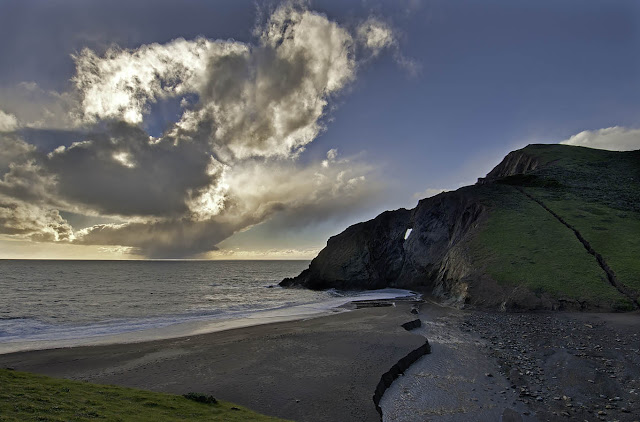 |
| Summer at the Golden Gate |
Some things never change, like summer fog in the Golden Gate, or flocks of pelicans soaring along the coastal bluffs.
I was looking for a bike ride the other day that was a little longer than usual, so I pedaled my ebike over the bridge to Tennessee Valley, part of the Golden Gate National Recreation Area. The first surprise was finding that the formerly rough, pot-holed, dirt parking lot at the end of the road had been completely paved. The second surprise was finding that the horse stables and ranger housing half-way down to the beach were no longer in use and were going back to nature. (The decision to close the lower T.V. stables was made back in late 2013, and the Horse Mounted Patrol that was housed there has been moved to Rodeo Valley.)
I rode out the dirt road to the Haypress Camp and parked my bike to eat the apple I'd brought with me, then took out my FZ-80 while California quail, scrub jays, and northern flickers capered around the campground. It was sunny, warm, quiet, sheltered from the wind, full of bird life, and in general just about the exact opposite of my home in San Francisco. After filling up my spirits at that little nature sanctuary, I coasted back down the rutted dirt road to the main trail and toward the beach.
On the way I kept my eyes peeled for wildlife, stopping here and there to scan the hills and meadows more carefully. It was pretty much mid-day, so I had more hope than actual expectation, and indeed I didn't see any wildlife other than birds. The heyday of looking for bobcats to photograph was ten years ago, back in 2012. There were three very healthy male bobcats (nicknamed DeNiro, Redford, and Rocky) that occasionally made themselves available to be photographed by hunting in the open. They were plainly accustomed to having people around since Tennessee Valley has always been a very popular place.
As I was checking out the abandoned stables I wondered if the area was better wildlife habitat now or before. It seems like a given that the landscape, if left to itself, would provide better habitat than a landscape with more human influence, but I'm not so sure. Can formerly productive fields and meadows become too densely overgrown? Is all human presence to be considered "disturbance," or is some of it actually conducive to wildlife? Hopefully the park service and/or others have taken this great opportunity to make a study of it.
 |
| Young Redtailed Hawk on the Hunt |
 |
| Paved Paradise |
 |
| California Quail Chicks |
 |
| Papa Keeping Watch |
 |
| Northern Flicker on the Fence |
 |
| Young Flicker |
 |
| Picnic Area Near Former Stables |
 |
| Trail to Tennessee Cove |
 |
| Cardinal Meadowhawk |
 |
| Tennessee Cove |
 |
| Tennessee Cove in 2011, Before the Earth Portal Caved In |
 |
| Cliff Selfie |
 |
| Tennessee Valley |
 |
| Great Egret Hunting the Tidal Flats of Richardson Bay |
* * *




















